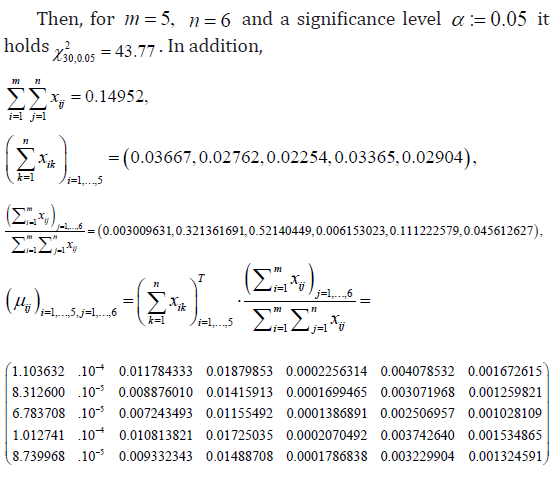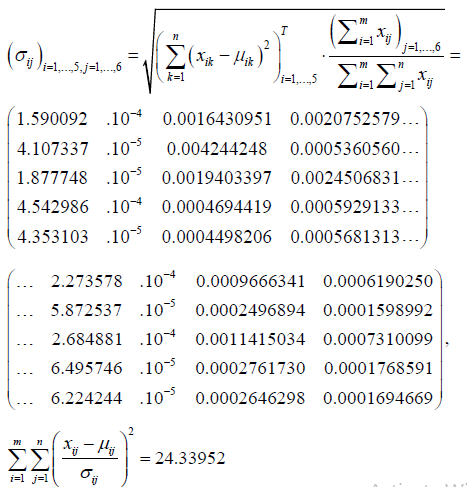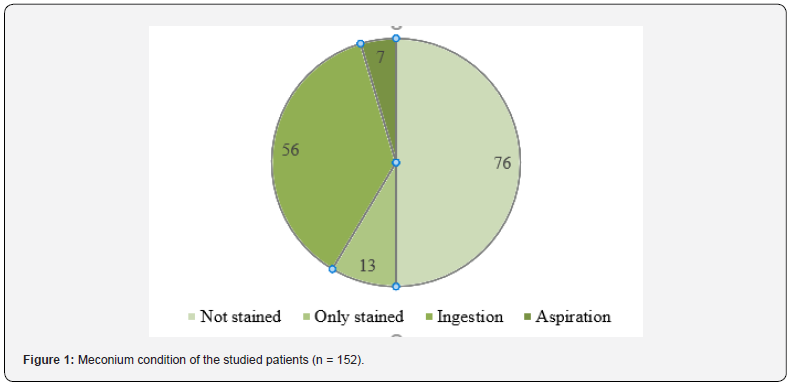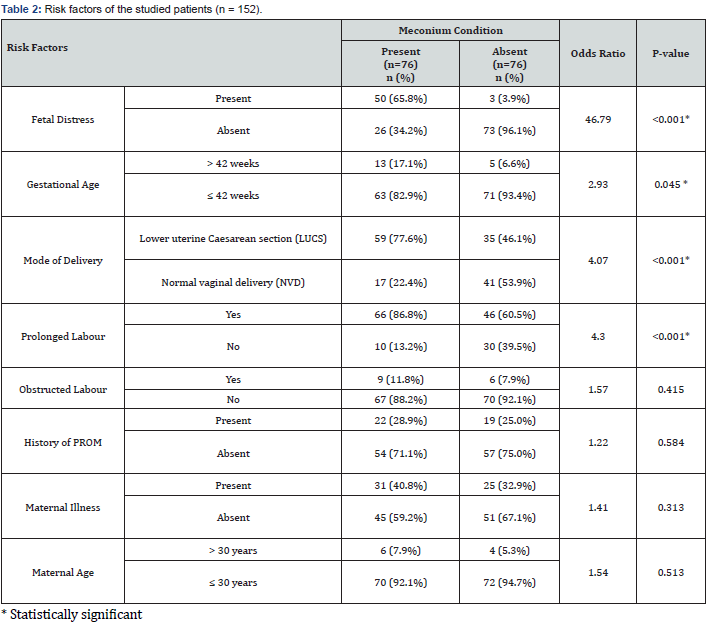Within the concept of Public Archeology, this article
aims to excel on the preservation and safeguarding of the memory of the
resistance movements against the military regime as public art and
Brazilian historical heritage, highlighting the monument to the army
captain and guerrilla Carlos Lamarca (1937-1971), located in Vale do
Ribeira, which had been removed from the site with the justification of
apology to crime. Lamarca led the Revolutionary Popular Vanguard (VPR)
in the 1970s and played a steadfast role against the military regime
established in the country between the years 1964 and 1985.
Keywords: Carlos Lamarca; Heritage; Public Archeology; Memory; Safeguard
There is no future without a past, for which
Archeology contributes. Over the years, Archeology has been the subject
of discussion about its importance for safeguarding and enhancing
cultural, material and immaterial goods. Due to its wide scope, working
on heritage preservation issues requires facing barriers; know concepts
and legislation relevant to safeguarding heritage; adapt to the
concepts; recognize and respect the differences that social groups
attribute to their experiences; among other sensitive issues. During
this period, the Prehistory Commission established in 1952 by the
intellectual and humanist Paulo Duarte (1899-1984), in order to protect
archaeological sites, passed Law 3924/61, in 1961. The law deals with
the “Archaeological and prehistoric monuments” and establishes the
protection of both by the State. According to the Brazilian historian
and archaeologist Pedro Paulo Funari, “to this day it is still the only
explicit federal law on the protection of archaeological heritage”.
In this process, Luiz de Castro Faria (1913-2004),
anthropologist, archeologist, professor, librarian and Brazilian
museologist, who contributed a lot to the debates about Law 3924/61,
known as archeology law for having provisions on archaeological
monuments, stands out of Brazil. Castro Faria left an immeasurable
contribution to safeguarding the archaeological cultural heritage.
During the military period (1964-1985),
Archeology suffered strong pressure with authoritarian tendencies. From
1985 onwards, democracy opened up to the development of a series of new
activities with the archaeological heritage as an example, published
books, academic articles and constant meetings on the management of
cultural heritage. “Several states have introduced legislation to
protect archaeological sites and instituted records of monuments and
archaeological collections” [1].
Archaeological research has been carried out across
the country thanks to the publication of heritage laws. In the last few
years, Brazilian archeology is no longer restricted to the academy and
starts to include an agenda in Public Archeology (the result of
transformations in the midst of societies and Archeology science). The
term Public Archeology was first mentioned in 1972 in the work of
Charles McGimsey III, linked to the management of cultural heritage and
differentiating itself from exclusively academic research. This recent
field, understood as a discipline aimed at interaction and sharing with
society - and that understands the public not only as local groups,
ethnic communities and students, but also the society in general that
reads, interacts and reflects; Developing itself as a field of
interdisciplinary studies, Public Archeology has as one of its main
objectives the reflection on methods, practices, values, meanings and
how archaeological works would be disseminated, thus providing dialogues
and debates regarding the symbologies and of representations through
material culture. That is, works in the field of Public Archeology
are linked to political and social issues, promoting awareness in
society in relation to safeguarding heritage and corroborating
society’s interest in scientific, economic, artistic and educational
aspects. That said, this article aims to guide your discussions in
the context of the defense of the archaeological, historical, artistic,
cultural heritage and mainly the preservation of the memory of
the movements of resistance to the military regime in the country,
taking as a framework, the bust of Carlos Lamarca, opened in
2012 at the Núcleo Capelinha museum of the Rio Turvo State Park
(PERT), municipality of Cajati, Vale do Ribeira.
The bust of Lamarca was a project of the Park council,
formed by the community and members of the government.
Arbitrarily removed from his place with a photo panel that told
the story of the guerrillas and the repression of the lead years,
he was taken to the capital in August 2017. This act was derived
from an environmental briefcase (action by the secretary of
the environment of the state of São Paulo, Ricardo Salles, today
Minister of the Environment), which directly interfered in the
local history, attentive to democratic freedoms and violating the
right to collective memory and regional identity. Before focusing
on issues related to the removal of the monument to Carlos
Lamarca and the clashes to safeguard the archaeological heritage,
as well as our identity and memory; it is relevant to talk about
the figure of Lamarca and his importance for the history of Brazil.
After 49 years of his death, Lamarca played a very important role
in the fight against Brazilian dictatorship. According to historian
Wilma Antunes Maciel, “Lamarca is both the individual, a hated
ex-soldier, but also the organization itself and what it represents
in opposition to the regime.” Condemned as a traitor and deserter,
he led several urban guerrilla actions, ordered a guerrilla focus in
the Ribeira Valley and led the kidnapping of the Swiss ambassador
to Rio de Janeiro in the 1970s, in exchange for the release of 70
political prisoners. Lamarca was killed on September 17, 1971
in an operation organized by the military in the interior of Bahia,
thus becoming a relevant part of the country’s history.
“We lose the right to die until death is an example.”
(Carlos Lamarca)
Carlos Lamarca was born in 1937 in the city of Rio de Janeiro.
Son of a shoemaker and a housewife, he studied from an early
age aspiring to overcome the needs of his humble family. In the
1950s, he opted for a military career, after graduating in the
South in 1954, Lamarca joined Agulhas Negras in Resende, Rio de
Janeiro in 1958. He married his childhood friend Maria Pavan. His
predilection for political readings begins through the press organ
of the PCB (Partido Comunista Brasileiro), The Workers’ Voice,
whose party cell was responsible for infiltrating “pamphlets and
documents left under its sheet” [2]. Lamarca was never outside
the party, but he sympathized with communist ideals. Appointed
to serve in São Paulo as an aspiring officer, he joined the 4th
Infantry Regiment in Quitaúna in Osasco, in 1960.
Lamarca is standing out in the military field, in 1962 he is
sent to the UN (United Nations) peacekeeping mission, in the Suez
Canal, located in the Middle East. The poverty of the Palestinian
people will make them reflect on the issues of the Brazilian
reality: At Suez he learns new things. AMarina and her friends
commented that the reality of the Arab people was much more
cruel. That the Arabs were hungry. That they suffered a lot, just
like the Brazilians, and if I were to fight, to be fair, I would have
to go to their side. And it would pass if there was combat, he said.
It was there - he said one day - “that I became more aware of
poverty” [2].
After his return, he served in the Army Battalion of Porto
Alegre. Soon he asks for a transfer to the city of Osasco,
metropolitan region of São Paulo, where he meets his former
companion, sergeant Darcy Rodrigues, who worked in the
regiment as an agitator, proposing the formation of a study
group concerned with the political issue and with the national
situation. In the years 1969-1970 (period of the civil-military
dictatorship), Carlos Lamarca acts at the head of the VPR (Popular
Revolutionary Vanguard), leading the organization’s command
and leading the armed resistance to the dictatorship within a
program of liberating national revolution towards socialism.
Coming from dissidents, the VPR intended to fight against the
dictatorship based on cadres from the lower ranks of the army,
noncommissioned officers, workers and members of the student
movement. Military austerity culminated in the formation of
connected cadres under Lamarca’s leadership and reported on
his career as a captain. His status as a soldier and officer will
succumb after the assault on the Quitaúna Barracks in January
1969. This joint action was attended by Darcy Rodrigues, Carlos
Roberto Zanirato and José Mariane, which resulted in the flight
and expropriation of weapons and ammunition.
The majority of the VPR activists fall underground and as
deserters assume the condition of revolutionaries, leading the
beginning of insubordination as subversives, with Lamarca at
the head of the VPR command. Abandoning his career as an army
officer, Carlos Lamarca, to dedicate himself entirely to fighting the
dictatorship and the liberating national revolution, postulated
by the VPR in its program against the civilian military regime,
assumes the condition of revolutionary. For the army this will be
a betrayal of lesa homeland, unforgivable, however, to the left this
attitude invokes a heroic act [3]. Lamarca appears as a former
captain and guerrilla, the antinomism of the figure of the hero /
traitor within the political imagination creates ambivalent forces.
The choice for desertion conferred himself the title of dissident
and traitor to the country. And in this context, as a rebel soldier,
who begins his saga at the head of the VPR command, he is invited
by guerrilla Carlos Marighella (1911-1969,) to head the armed groups of his organization (ANL- Ação Libertadora Nacional).
Lamarca refuses the proposal. After the assault of Quitaúna,
one of the decisive actions for the acquisition of funds, the VPR
is converted into the VAR de Palmares (Vanguarda Armada
Revolucionária de Palmares), in a merger with Colina (National
Liberation Command). With ammunition and weapons, they
take action initiatives, including the one known as Noite de São
Bartolomeu2 and the famous kidnapping of the Swiss ambassador
Giovanni Bucher.
Given the application of such actions, the circumstance was
to set up a strategy in the countryside, through the difficulty of
sustaining the struggle in the city and circumscribing the territory
in which a guerrilla school would be implanted, with the purpose
of training the city’s combatants. The decision to move city officials
to the countryside was made in an unexpected way, even though
guerrillas Carlos Lamarca and Yoshitane Fujimori (1944-1970)
had already examined the location in which they were going to
settle for training.
The driver from Lamarca, Joaquim dos Santos (Monteiro),
responsible for logistics, details the events that led them to
Vale do Ribeira: Lamarca’s need to go to Vale do Ribeira was an
emergency, it wasn’t because we had prepared it, we didn’t even
expect it to go to Vale do Ribeira, there was no question of that.
We had everything planned to go to Goiás, and we already had
all the equipment purchased, we had already gone to the farm,
everything was settled for the farm we were going to, not even
Lamarca knew where it was. Who was going, who was in charge
of doing all this and had chosen the area was Quartim de Moraes,
a professor, one of the leaders of the VPR. The greatest leader was
Onofre Pinto. Quartim gives up and he I knew about the area in
Goiás with about three days left for us to start traveling there, to
start transporting people there, at the end of 69 and beginning
of 70, and then Quartim comes to me and says: - Look, Monteiro,
I will need do me a favor, I’ll need you, I wanted you to lend your
documents so I can get a passport because I won’t be able to go
there to Goiás, I can’t stay away from my family you know, I had
to send everything abroad, they are in Italy and I will not be able
to go to Goiás. Then I said: - I am without my documents here, I
cannot, so let’s do the following, in the afternoon we will arrange
a meeting and then I will give you my documents [...] [3,4].
After the withdrawal of the Quartim leader, a logistical
problem for VPR is established and through this unforeseen
Monteiro continues: [...] I tried to pretend that nothing was
happening for him not to notice, then in the afternoon we go
there and pick him up and take him to the device. You will have
to explain, it is going crazy, after all the work, all the assembly
that we did the boy will, all of that, now you will retreat, retreat
under these conditions! Ai will give a damn cake, he just won’t die
because Lamarca, Lamarca himself was a very good person and
easy to deal with, let’s try to make the gene solve it in another way,
then they get him, keep him prisoner in a device and they will fix
it later, take him out of Brazil and send him to Italy, he was the son
of an Italian and had Italian citizenship, they couldn’t repatriate
him here so it was guaranteed that he wouldn’t come back, so he
wouldn’t be able to, no I could be here, I couldn’t be suspicious,
otherwise he would end up being arrested, he was burned, he was
wanted, his name on the “wanted” signs, and at that time they put
everyone’s picture, and flooded the entire country. They didn’t
have mine, they didn’t have anything they knew about me, I was a
rare case, I was from 64 until the day I was arrested and they had
no knowledge, nothing about me, they didn’t know my name , they
didn’t know who my relatives were, what profession I had, it was
the only one I didn’t know, nobody could go more than three or
four months without being discovered, I was the only one who had
six years and nobody knew anything. So, as a result, then we had
to change the hurry, then at a meeting of the command of the rapid
VPR, which will decide what we would not decide, this meeting
was held in São Paulo. The one in Vale do Ribeira was made in
Peruíbe, The Registry Operation3 mobilized the Armed Forces to
hunt down the guerrillas led by Lamarca. In this context, under
Maciel’s prism, this image of “Captain Lamarca” is constructed,
a synonym of betrayal that sustains the feeling of rejection.
Lamarca used his skills for the revolutionary cause, known for his
discipline, integrity and aim, he skillfully mastered techniques,
the handling of weapons and ammunition. Lamarca’s actions on
the left did not raise suspicion within the barracks, because, in
addition to political participation, he was impeccable with regard
to military obligations, being an officer admired by both superiors
and subordinates. Shooting champion, his unit hardly missed a
competition. For the good relationship and humane treatment for
the soldiers, everyone wanted to be under his command [5].
In this way, the command of the VPR with the purpose of
forming a revolutionary embryo in the countryside, developed a
group of resistance to the military dictatorship, whose aim was
to implant a liberating and socialist revolution. Equated with the
massive propaganda of defamation against the guerrillas carried
out by the Armed Forces, Captain Lamarca and his guerrillas left
a strong positive feature in the popular imagination and in the
collective memory of the populations of Vale do Ribeira. Aspects of
the guerrillas’ respect, admiration, encouragement and solidarity
are preserved in the memory of the local rural population, which
distinguishes a very different line from the one the army used to
pursue them during the anti-guerrilla operation.
Recent reports, according to Monteiro when he will return
to Ribeira with Marcelo Rubens Paiva and Pedro Bial in 1996 to
launch the book Não És Tu, Brasil and a documentary-vetoed by
the army according to Monteiro-, says of the relationship of the
residents of the Valley with the guerrillas , that they were very
polite and when they kept in contact with farmers they asked to
remove bunches of bananas or other food, and when they didn’t
ask to buy. They were seen as saints, very good people. Unlike the
army and its soldiers and officers who stole chickens and pigs,
mistreated simple and humble people, raped young peasants
and, according to a report by a resident of Eldorado, had a son
murdered [3,4].
As for the organs of the dictatorship in the lead years, Lamarca
was seen not only as a traitor, but also as a bandit, resulting in this
duality on the memory of the guerrillas, where some reproduce
their condition as terrorists and others describe their attitudes as
heroic.
In the memory of Luís Carlos, a resident of the Abaitinga
neighborhood, located in the municipality of São Miguel Arcanjo
(city where the guerrillas went), the following is a reminder: [...]
The only thing they said to the people is that he was a defector
captain in the army, a terrorist, who killed a lot of people, helped
a lot of people, his intention was not to help anyone, who trained
street kids coming from São Paulo to steal, and who needed to
get them, they couldn’t leave this loose man [3,4]. On the other
hand, Darcy Rodrigues, who had been arrested on the run, reports
in Antônio Pedroso Júnior’s book: Sergeant Darcy, Lieutenant of
Lamarca, the following considerations based on the flight effect
on local populations and their relationship with guerrillas: The
small group continued to make a run for it, making contact with
the peasants of the region in order to obtain food, impressing
themselves with the way it was received most of the time. Many of
the peasants who collaborated with the guerrillas were tortured
and killed by the army [6].
The army campaign had more than 20,000 men from the three
armed forces, federal agents and civilians who invested in this
defamation campaign against the guerrillas. This all took place in
the context of the moment of unraveling and escape in the borders
of the municipalities of Sete Barras and São Miguel Arcanjo
between Vale do Ribeira and Serra do Paranapiacaba. The breach
of the army barrier in the Abaitinga neighborhood in São Miguel
Arcanjo, added to the execution of Lieutenant Alberto Mendes
Júnior and the ambush of a water truck under the command of
Sergeant Koji Kondo, enabled the guerrillas to finally overcome
Operation Registro. Its consequences and outcome were cited by
Captain Carlos Lamarca himself: We decided to establish contacts
with the peasants and started to receive their support. We were
surprised by the speed of this support, which they immediately
offered us. We did not deceive them, we were frank with them and
we were impressed with the ability they showed to understand
us. We do not want to give some examples here so as not to
compromise entire peasant families, a young peasant couple
was murdered by the army. She was pregnant. The peasant must
have been tortured because he did not reveal the place where we
should have an appointment with him. The repression went to the
place, its men disguised as peasants. But we discovered the ruse
by the way they responded to our greeting. We immediately raised
the alarm. Days later we came, namely, in the city of São Miguel
Arcanjo, that the scare was so great that the entire oppressive
troop threw themselves to the ground, two of them tore their
arms. A sergeant wounded his face on a tree branch. The Public
Force soldiers themselves commented on these facts [2].
That said, we can verify a substantial distortion as reports
of torture, rape and deaths are recurrent and give us evidence to
confront the profile of terrorist and subversive, propagated by the
army to Carlos Lamarca and the guerrillas. Historian Jefferson
Gomes Nogueira discusses these notes when analyzing the role
of the press in the construction of Lamarca’s political imaginary:
Seeking to break with the love and hate relationships that
permeate our imagination when we deal with analyzes of that
period, we started from the assumption that the mainstream
press, during the military regime, contributed to the production
of Carlos Lamarca’s image, positioning him as a hero, time as a
traitor. In this process of building the image of Carlos Lamarca
during the armed struggle in the military regime, the role of
the press was fundamental in the selection of the elements that
made Lamarca “inhabit” in the political imagination between
two myths: that of a liberating hero and the subversive terrorist
bandit; in short, a threat to the current social order (NOGUEIRA,
2008, p. 3, 4). Between the erroneous narratives created by the
army and the popular imagination that fall on the figure of Captain
Lamarca, there are countless attempts to erase the image of the
guerrilla with that of his comrades. For example, we have the case
of removing the bust of Lamarca from its pedestal (the central
object of analysis of our article, which will be presented below).
The monument is everything that can evoke the past,
perpetuate the memory [...]”
(Le Goff)
Carlos Lamarca and other guerrillas (all members of the VPR),
carried out guerrilla training in the middle of the Atlantic Forest,
departing from the Capelinha site, where Rio Turvo State Park is
located today (in Cajati, Vale do Ribeira). The guerrillas passed
among the trails that covered the municipalities of Jacupiranga,
Registro, Eldorado, Cajati and Sete Barras, in a break with the
strategic siege of the army. Three monuments symbolize the
collective memory crystallized in the figure of Captain Lamarca
as a representation of resistance to the lead years: the statue of
Lamarca built in 2007 together with the “Captain Carlos Lamarca”
square, in the town of Pintada, municipality of Ipupiara, in Bahia;
the bust of Carlos Lamarca opened in 2012 in Cajati, Vale do Ribeira
and the sanctuary of the martyrs, opened in 2013 (located in the
district of Ipeberim - 12km from the municipality of Ipupiara),
where you can also find a statue of Lamarca and Zequinha
Barreto that symbolizes the last moments of the guerrillas, where
Zequinha carries the captain in his arms(Figures 1-5).

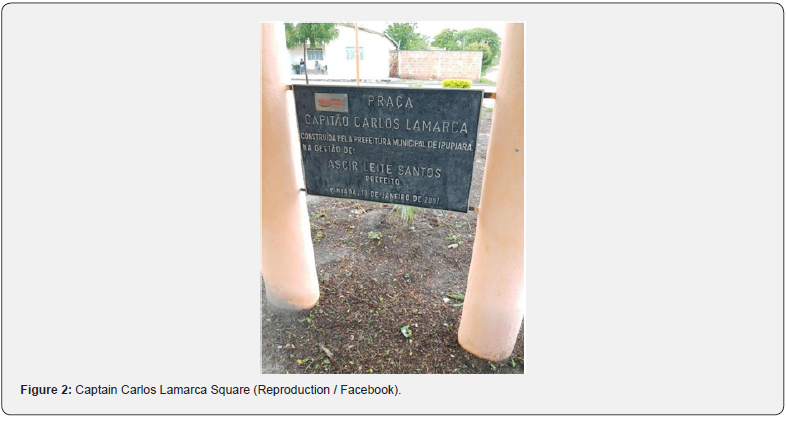

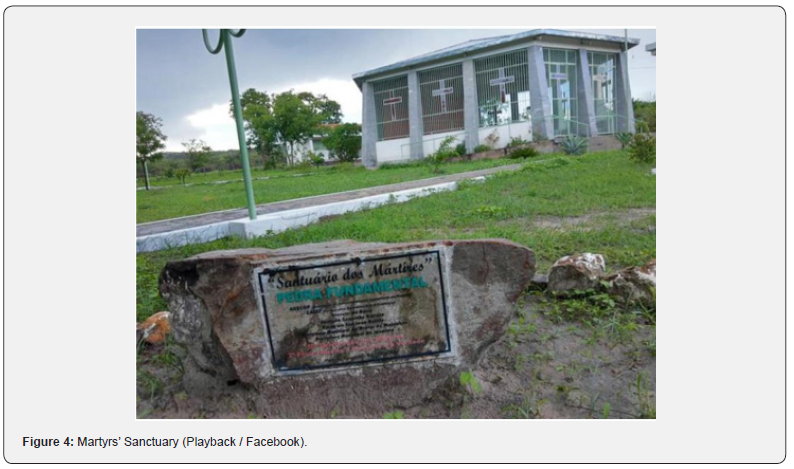
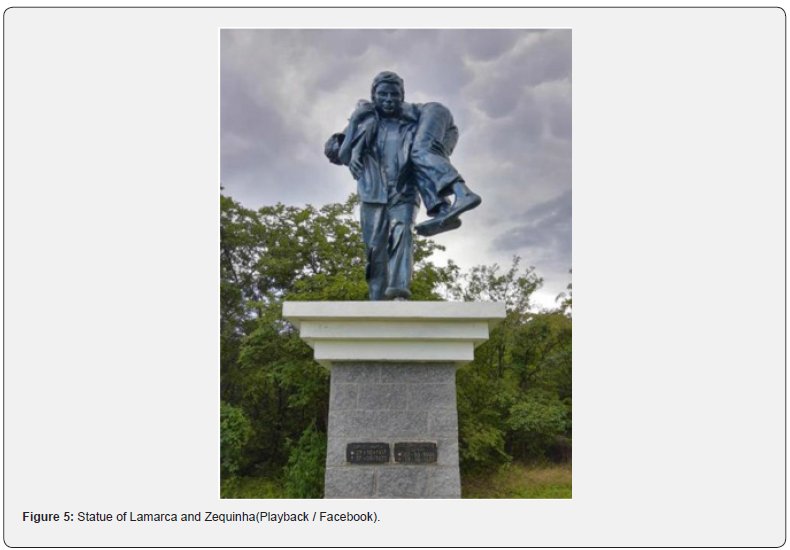
All these monuments considered as public art are also Brazilian
archaeological heritage. In drawing a comparative brief, we have,
on the one hand, the preservation of archaeological heritage in the
region of Bahia, in contrast to the other that had been violated
arbitrarily in the interior of São Paulo. Made at different times and
regions, they all fall within the context of the armed struggle in
Brazil and represent the struggle for democratic freedoms, even
though this has cost the appeal of the revolutionary route.
According to the definition of the Charter for the Protection
and Management of Archaeological Heritage published in
1990 by the International Committee for the Management of
Archaeological Heritage (ICAHM - ICOMOS), “the archaeological
heritage is highlighted as composed of material heritage that can
be read or analyzed by Archeology.” That said, we will focus our
discussions on the bust of Carlos Lamarca opened in 2012 in front
of the CET (Thematic Exhibition Center), located in PERT (Parque
do Rio Turvo)4 in Cajati, in the interior of São Paulo.
PERT maintains a very close relationship with local
communities, currently several groups of traditional populations,
such as quilombolas, fishermen and caboclos, who lived in the
region before the creation of the unit currently reside in its
surroundings. The Park is divided into three nuclei: Capelinha,
Serra do Cadeado and Cedro; where they offer visitors ecotourism
activities, sheltering an important archaeological site (where a
fossil of about 9,000 years old was found, considered the oldest
record of human occupation within the State of São Paulo)5;
trails; waterfalls; caves and sambaquis. Another attraction that
Núcleo da Capelinha has is the passage of Carlos Lamarca and
his guerrillas of the Popular Revolutionary Vanguard (VPR) in
1970, during the escape from the dictatorship; the cave and the
Lamarca trail connect history and nature. In addition, the Núcleo
da Capelinha has a Thematic Exhibition Center (CET), which
consists of a museum (Museu da Capelinha). Several themes are
treated and exposed at the CET: fauna and flora, the formation
of caves, the history of Lamarca, among others (Figure 6). The
bust of Lamarca was commissioned by the researcher and park
manager Ocimar Bin. The project of the work was carried out by
the Cajati journalist Luiz dos Passos and sculpted by the plastic
artist Anderson Carvalho. Made of iron, cement, gravel and
covered with tar, the work weighed approximately 40 kilos, taking
15 days to be finished, however, it was not completely finished
according to its creators6. On the opening day, some of the former
guerrilla members went to participate in the official photos, such
as sergeants Darcy Rodrigues and José de Araújo Nóbrega, among
others who joined Lamarca for training in the region. According to
Passos, the bust of Captain Lamarca was inspired by a photograph
found on the internet. The photo dates from 1968 when Lamarca
was in the army and served as a shooting instructor for Banco
Bradesco employees (Figure 7).

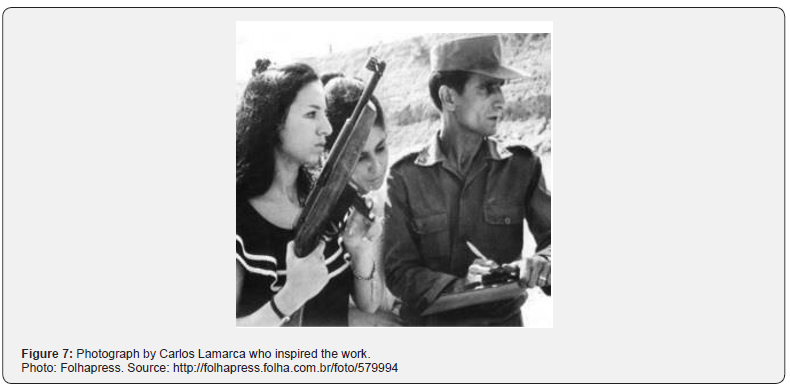
In August 2017, the statue of Lamarca is removed from its
pedestal along with a panel of photographs and information
about the guerrillas, from the Thematic Exhibition Center (CET).
The order to remove the bust and the panel was given by the State
Secretary for the Environment of São Paulo and current Minister
of the Environment, Ricardo Salles7 Rafael Leonard Campolim de
Moraes (responsible for the management of Alto Paranapanema
of Fundação Florestal, which covers the Rio Turvo State Park
and other units). THE bust removal was carried out (without
the knowledge of the population) by park and city hall officials
in Cajati. The piece was reportedly taken to the city of Registro
by the environmental police, and may even leave the country. The
argument for withdrawal was that of apology for crime; according
to reports8 under condition of anonymity of the unit’s employees
to Salles stated that the material exposed was “proselytizing
communism” and that “the park is planting communism in the
hearts of the children” - the secretary reportedly made these
statements to the park’s employees and questioned by the report
about this gesture being a prejudice to the historical and cultural
heritage, Salles answered through his press office, confusing the
name of Carlos Lamarca with that of Carlos Marighella (1911-
1969), another guerrilla belonging to the Aliança Libertadora
Nacional (ALN) group .
Narrating facts is one thing. Raising busts with public money
and in a public park is quite different. Marighella [sic] was a
guerrilla, deserter and responsible for the deaths of countless
people. The presence of this bust on the site is unacceptable9
(SALLES, 2017). A little over an hour after sending the secretary’s
reply, the Environment Secretariat asked to correct the mistake
with the change of names. In addition to the statement by Claudia
Lamarca (daughter of the captain), deputy Luiz Turco filed a
motion of repudiation in the state Legislative Assembly in August
2017 and deputy Carlos Gianazzi filed a lawsuit in the State Public
Ministry for administrative impropriety and dilapidation of
property public.
After three years, Salle remains unpunished. There is no
information on where the bust is kept, the Forestry Foundation
says it is investigating the case. The Public Ministry ordered the
civil police of Cajati to open an investigation against Salles for a
crime against cultural heritage. Chief Tedi Wilson de Andrade
ordered that a precatory letter be sent to the civil police of São
Paulo so that the former secretary could be heard in the city where
he lives and a request to increase the deadline for the conclusion
of the investigation was requested to the Justice. Salles becomes
defendant, according to the complaint of the MP accepted in court,
he had no authority to have the bust and panels removed, as the
installation of the pieces had been decided and authorized by the
park management council10 (Figure 8).
In addition, as the bust was carried out with public funds, by
ordering the work to be removed, the then minister would have
caused damage to public assets. At the time, the work cost 614
thousand reais. The bust was fixed in an outside area of the park,
city officials had to use a jackhammer to remove it, which damaged
the work (Figure 9). In a more recent statement by Salles to justify
his decision to the Public Ministry, published in the newspaper
The state of Sao Paulo in January 2018, he points out that he has
already provided the necessary information and that he expects
the investigation to be closed:
An environmental compensation feature was not designed to
put a bust in a park, as they did there. Even more than one person
who was a criminal, regardless of the ideological side. It would
be the same as a community like Rocinha, in Rio, to use public
money to make a statue of Fernandinho Beira-Mar. It would be
using public money inappropriately. Even though I am no longer
the secretary, I still think that it is not the best thing to have a bust
of Lamarca in a public park11 (SALLES, 2018).
Carlos Lamarca is part of the history of Cajati, Vale do Ribeira
and Brazil; regardless of the individual’s political position, it
does not justify the act of removing this work or any other. The
removal of the bust was a disrespect to the population, an attempt
to want to erase their history and the presence of guerrillas in the
region. Historical responsibility within a dynamic that transposes
national identity and its preservation goes beyond policies
aimed at safeguarding and sealing official symbols. In the case
of authoritarian governments and dictatorships, as well as the
suppression of troubled periods of repression and attack on human
rights, it is essential to point out the importance of recognizing
them with the same responsibility with which the monuments to
those considered to be national heroes are preserved.
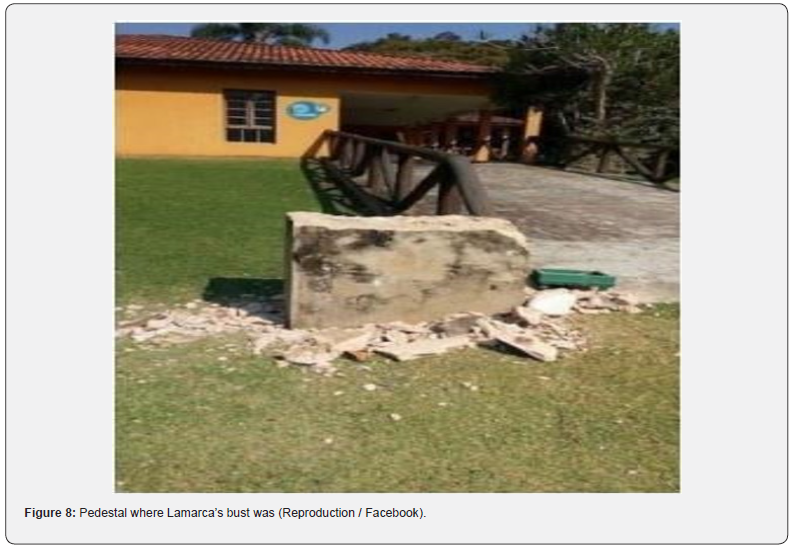

In this regard, we can quote the work of the historian Deborah
Neves: The persistence of the past: heritage and memorials of the
dictatorship in São Paulo and Buenos Aires, as a relevant source
of aid for the preservation of the memory of the movements of
resistance to the military regime (1964-1985). In this work, in
addition to Buenos Aires, the author breaks down the cultural
assets listed in São Paulo related to the period of the military
dictatorship, such as the former DOPS (Department of Political
and Social Order)12 and Arco Tiradentes13.
Relativizing the listed assets, such as the Arco Tiradentes and
the old DOPS, with the monument in memory of the passage of
the guerrilla in Cajati, crystallized in the bust of Carlos Lamarca,
consists of emphasizing the importance of the historical, artistic
and archaeological heritage of already-listed assets, pointing
out that this in question, violated by a portfolio that does not
correspond to CONDEPHAAT, has the duty to be safeguarded by
public bodies. Even though the bust of Lamarca is not a listed asset,
it solidifies the collective memory of the locality, based on the
passage of those who fought against the military civil dictatorship.
From Neves’ perspective, in relation to heritage, attempts to
conceal and demolish resistance movements explain, on the one
hand, the dynamics of public spaces that are altered, mutilated,
subtracted in different locations in the country. To the author, the
preservation of the memory of the movements of resistance to the
military regime is essential.
In this same concealment bias, With the return of democracy,
the victims’ relatives and human rights organizations made their
demands heard about the excesses committed in dictatorships.
The military tried to hide the evidence of their crimes. In this
way, they dismantled clandestine detention centers, kept the
fate of the bodies secret and destroyed documents about their
illegal operations (among others). Despite the testimonies of the
survivors, several aspects of the repression remained unknown.
It was in this need that archeology started to get involved in the
investigations [4,7,8].
In this regard, the urban landscape and artistic manifestations
inserted in public areas provide the researcher with elements
capable of awakening reflection on the representations of historical
memories and identities created in the city space. The recognition
of a heritage, implies perceptions of social dynamics and struggles
for the preservation of our identity and memory. Our memory can
be revived by means of remarkable sensations, odors, sounds,
flavors and different forms of visual representations of the urban
environment. Socially constructed memory appears to be related
to memories associated with monuments and particular places in
the city; the observation of artistic manifestations placed in the
public space is capable of providing valuable evidence regarding
the ways of thinking about city history, among other issues,
allowing passersby to interpret (in the symbolic or cognitive
field), memories, images and stories of the city. In short, the
conceptual assumptions that make up public art are based on the
relationships that it is capable of establishing with the space in
which it is inserted and with the individual that inhabits the city
[9-12].
The habit of filling the urban space with sculptures had a
special repercussion in France, in the second half of the 19th
century. Around 1870, the demand for pieces suggested the
characterization of the so-called “estatuamania”, a name that
solidified the celebration of historical republican characters
as a political-pedagogical initiative. Thus, both in France and in
Brazil, the registration of public statues sought to symbolically
strengthen the ties between the State and civil society. In the
course of the twentieth century, the production of sculptures
spread to several cities in the country, adopting the most diverse
styles and techniques [3].
Some researchers point out that the movements of May 1968
constituted a milestone in the history of public art14 created as a
form of urban expression, especially when ethnic, sexual and racial
minorities began to use murals to signal their social discontent,
express their concerns and their aesthetic experiences. Urban art
would be understood not only as an identity landmark, but also
as a collective creative expression. Through this bias, we realize
that the creative process of public art is intertwined with the
construction of urban memory itself. However, this story is not
just limited to the insertion of works of art in this context. As Peter
Burke points out: “In different countries, people have different
ways of remembering the past [12].”
A historical archeology of the cities, including the
contemporary ones, provides different readings of the
aforementioned question. The material culture and the social and
political references impregnated in the historical monuments, in
the denominations of space and in the archaeological remains
keep codes used by social subjects to produce meaning aiming at
meanings such as national identity and ethnic difference. Other
memories manifested through the modes of artistic expressions
and housing, also condense identity references [13-17].
The different ways of enjoying the heritage (archaeological,
historical and cultural), relate to the origins of this population and
imply the transmission of knowledge, the exercise of sociability ...
The visibility of the images displayed in open spaces transmits to
the observers (whether they are inhabitants or occasional passersby),
a given reading of the city that suggests an understanding of
urban memories and historical landmarks.
In short, we see the city space as the setting for several ways
to preserve collective memory. If we refer to some particularities
of the cities, we will be faced with statues, street names, parks,
squares, schools, which recreate and they represent images of
national and / or global history, eternalizing events, intellectual
and political characters. These areas must be integrated into the
cultural circuit of public art in its fullest sense, precisely because
they welcome signs of memories (individual and collective) and
references of history, both local and national.
Currently, the Institute of National Historical and Artistic
Heritage (IPHAN), despite the numerous administrative
restructurings that marked the performance of the autarchy and
its creation in the Vargas government, its objectives and methods
of action have been respecting the international commitments
signed by the countries subscribed to the Heritage Convention
(1972), led by UNESCO (United Nations Educational, Scientific
and Cultural Organization). As such, the recognition of Brazilian
heritage was restricted to the listing of works of art, monuments
and architectural complexes considered to be of high historical or
ancient value.
Thus, we understand heritage as a privileged locus where
memories and identities acquire materiality. When we refer to
the concept of heritage, understood as a deeper expression of
the “soul of the people” and as a “living heritage” that we have
inherited from the past, we live in the present and pass it on to
future generations; we recognize that heritage is historically
constructed and correlates individuals’ sense of belonging to
one or more groups. This reasoning of belonging assures them of
a cultural identity, which constitutes a valuable support for the
formation of the citizen; therefore, the right to memory and the
preservation of the heritage of different groups constitutes an
exercise of fundamental citizenship in order to create the bases
for social transformations necessary for the community [18-21].
As historian Jacques Le Goff asserted, memory allows the
survival of the past, since, through the exercise of symbolic
thinking, history is eternalized in human consciousness. From
this perspective, Le Goff highlights that the “cultural identity of
a country, state, city or community is made with individual and
collective memory”, from the moment that society is willing to
“preserve and disseminate its cultural assets” begins the process
called by the author as the “construction of the ethos culture and
its citizenship ”.
The notion of heritage comes etymologically from the
concept of “paternal inheritance”. According to Funari, this term
in the Romance languages derives from Latin patrimonium and
alludes to “property owned by the father or ancestors” or “to
the monuments inherited from previous generations ”. For the
archaeologist and historian, these expressions allude to moneo,
which in Latin means “to lead to think”. Consequently, the notions
of cultural heritage remain linked to those of remembrance and
memory - a basic category in the sphere of patrimonial actions,
since cultural goods are safeguarded due to the meanings they
awaken and the links they maintain with cultural identities [22-
24].
Only in the last years of the last century did the safeguarding
of natural and cultural goods started to be accepted as a positive
and intelligible gesture. The meaning of heritage has expanded
and is not limited to the definition of archaeological sites, works
of art, monuments, architectural ensembles or ancient objects
referring to representations of political power. This notion
was extended to different ways of living, forms of language,
gastronomy, celebrations, in short, ways of using goods, physical
spaces and the landscape. The rise of symbolic goods to the status
of heritage, stimulated society (especially minorities and ethnic
groups). The understanding that the patrimony was not limited
to the goods of the dominant elites made it evident that the very
concept of patrimony and the actions in its safeguard appear as
social constructions,
In the face of numerous challenges, the attitude of protecting
local heritage should be encouraged, in order to safeguard
the plural roots of peoples and their cultural traditions, since
they express ethnic origins and imply the conservation of their
identities and memories. In order to add the resident population
to the “living legacy” of the history of their city or region, it is
imperative to adopt pluralist heritage policies, capable of valuing
environmental diversity, cultural heterogeneities and multiple
identities, in order to foster coexistence between man and the
environment and ensure the social inclusion of citizens. These
measures must start from the point that the society that does not
respect the archaeological, historical, cultural, artistic, national
heritage and in all its diversity,
Another measure to be sought is the systematic and continuous
education of the population through the methodologies of
Heritage, Archeological and Environmental Education, which
should promote training and clarification about the process of construction of ethnic identities and enable the development of
reflections on around the collective and plural meaning of history
and preservation policies. Furthermore, it can stimulate the
desire to maintain past practices without ignoring the benefits of
technology, offer discussions about the management of protected
areas and parks, as well as the nuclei that aggregate them,
aiming at the maintenance of protected assets (for example, the
bust Carlos Lamarca) and preserved in the social and economic
dynamics of the region or city in which they operate. This is still
a particularly sensitive issue in Brazil, a country made up of an
enormous diversity of local historical and cultural contexts and
where a large portion of the population does not have access to
minimum resources, including education. For this reason, the
recent practice of Public Archeology in Brazil is a stimulating and
encouraging challenge.
In addition, it is essential that in addition to safeguarding the
Park’s Preservation Units, including their nuclei, they also recover
the degraded physical area; the explanatory panel with the photos
and information of Carlos Lamarca and mainly his bust, which
has the urgency to be recognized for its value. It is necessary to
follow the objective content of the work, to analyze its plastic
intentionality and the subjective load of its formulations. For that,
one must observe the bust of Lamarca as a document that raises
the understanding of certain contexts and historical memories,
such as that of the military dictatorship, a significant period for
the political history of the country, which we cannot let fall into
the oblivion, mainly in the face of the current Brazilian political
context of serious threat to the democratic state. Therefore,
we must once again emphasize that it is imminent to promote
respect for heritage and cultural diversity. We search through this
article to emphasize the importance of Public Archeology for the
understanding of the public in which archaeological research is
inserted through the process of social interaction, which enables
society to associate itself with the cultural heritage as a whole and
encourage its preservation. We hope that the notes of this work
can contribute in this direction and mainly with the recovery of
the bust of Carlos Lamarca together with his memory.
 chi-squared distribution with mn degrees of freedom. Especially, the
test does not underlie any restrictions as reported in [1,2]. Moreover, a
computational experiments is conducted.
chi-squared distribution with mn degrees of freedom. Especially, the
test does not underlie any restrictions as reported in [1,2]. Moreover, a
computational experiments is conducted. be done in the following way:
be done in the following way: 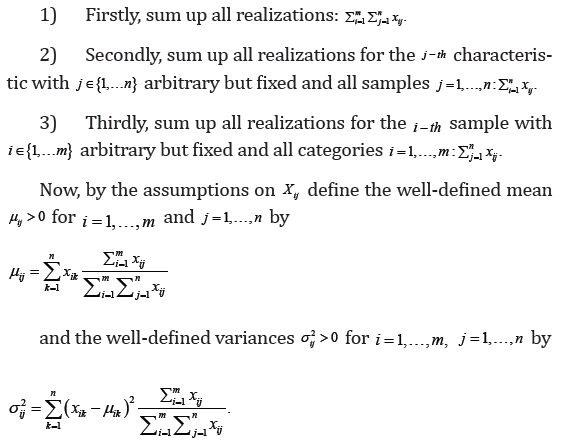
 which is on the one hand exactly chi-squared distributed with mndegrees
of freedom and on the other hand represents the squared sum of absolute
standardized mean percentage errors.
which is on the one hand exactly chi-squared distributed with mndegrees
of freedom and on the other hand represents the squared sum of absolute
standardized mean percentage errors.

